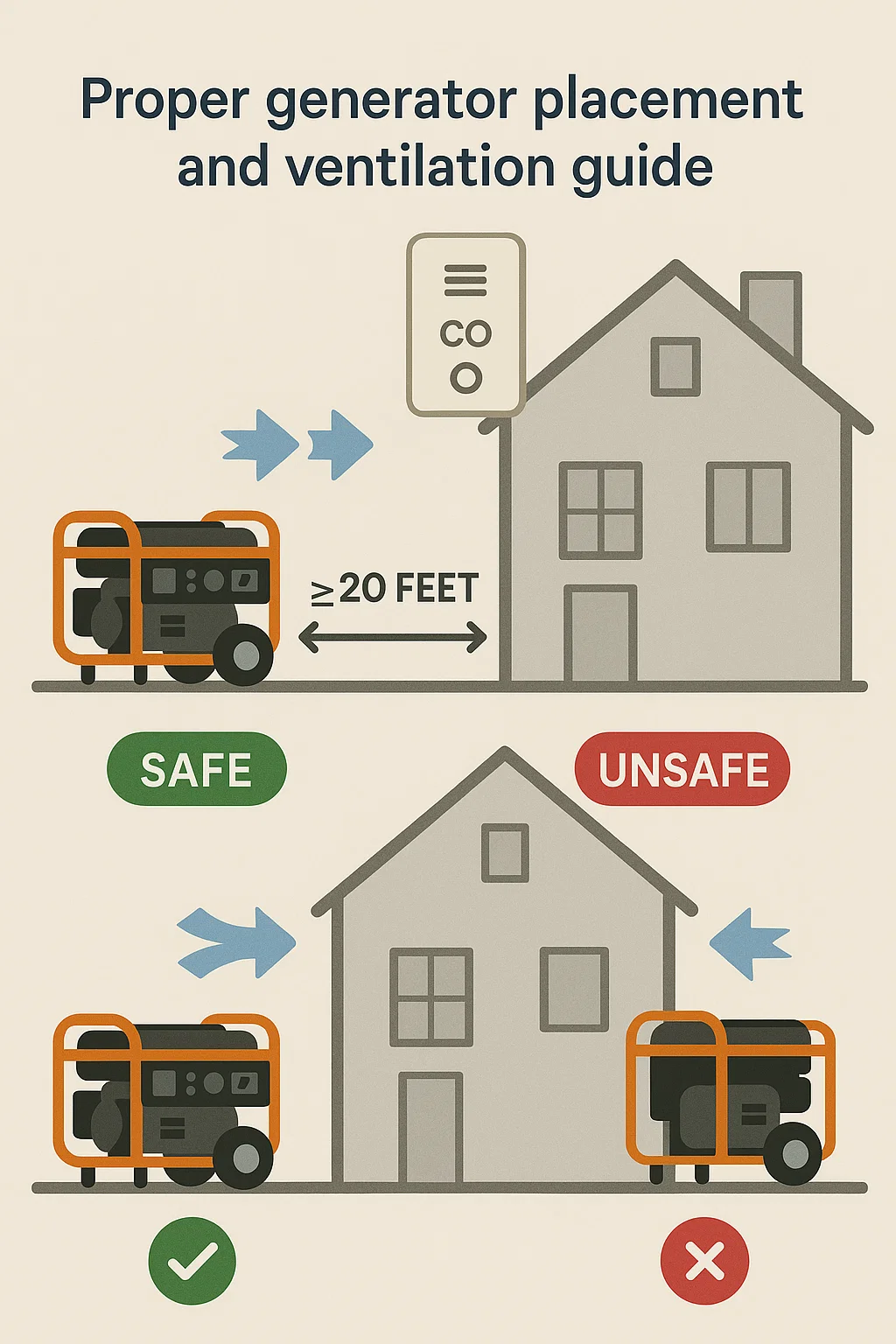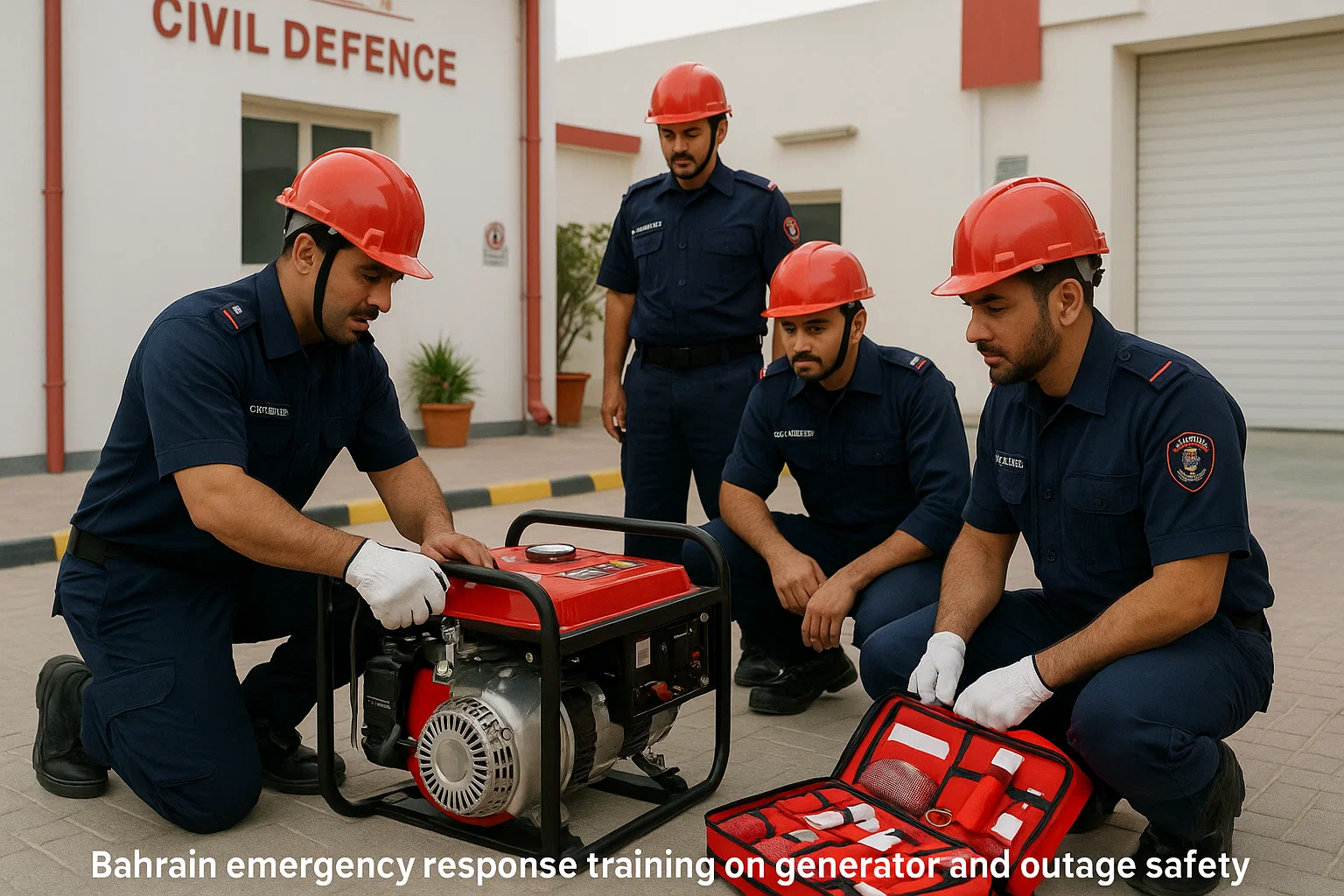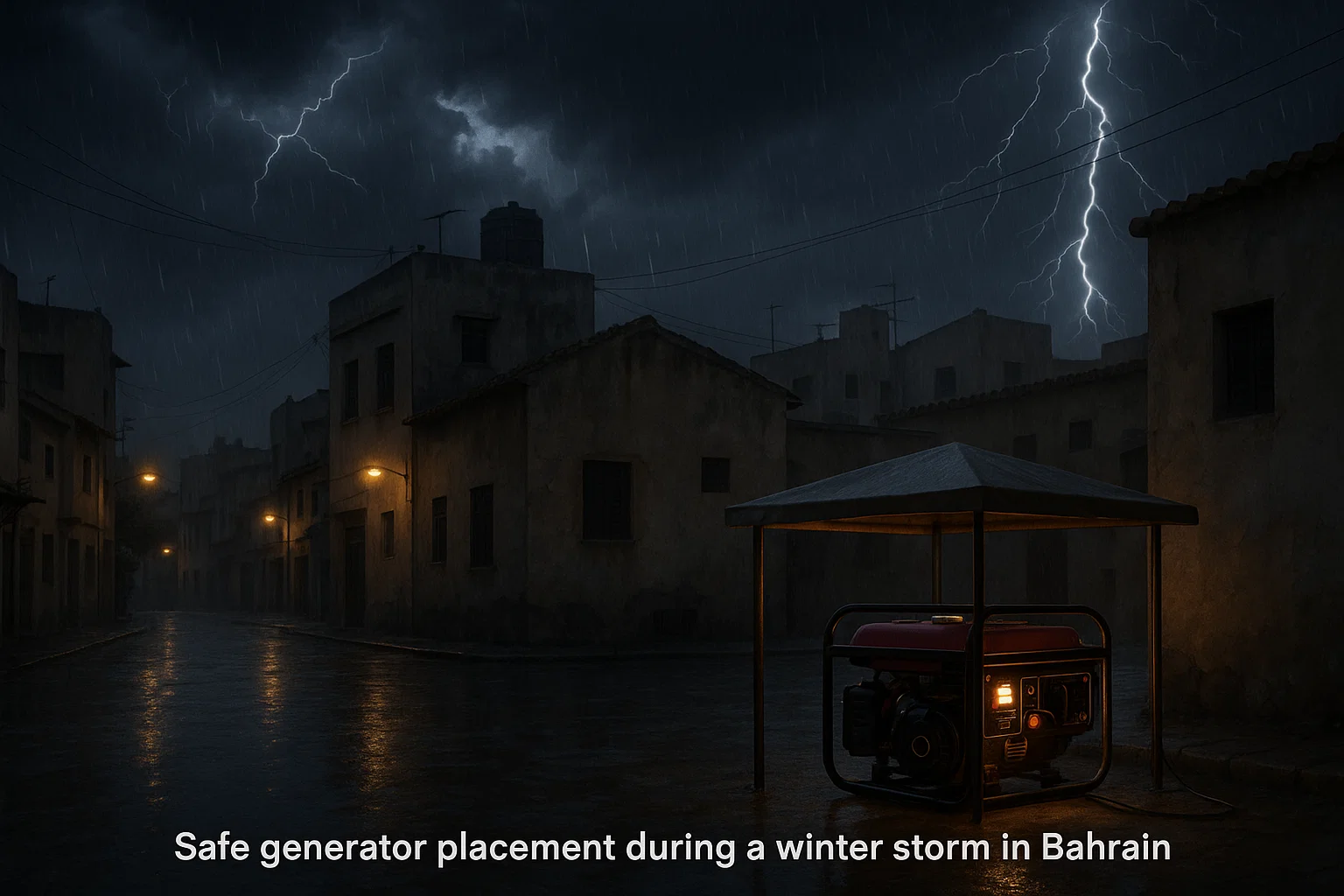 Definition & Relevance
Definition & Relevance
Winter in Bahrain brings occasional storms marked by strong winds and heavy rainfall. While snow and ice aren’t concerns here, flash flooding, electrical disruptions, and prolonged power outages can create significant safety challenges. For residents and responders alike, the focus shifts toward generator safety, carbon monoxide prevention, and emergency medical readiness.
Power outages often strike without warning. In a densely populated area like Manama or Muharraq, the sudden loss of power affects elevators, lighting, refrigeration, and critical medical equipment. Understanding safe generator use and recognizing the signs of hazards like CO poisoning or electrical overload is essential for both families and field responders.
Bahrain Civil Defence, in coordination with the Ministry of Interior, emphasizes seasonal campaigns urging the public to follow NFPA 70 (Electrical Code), NFPA 110 (Emergency Power Systems), and OSHA standards for generator operations. These guidelines ensure safety in temporary power setups during storm-related outages.
Operational Context:
Bahrain’s infrastructure is robust but not immune to seasonal disruptions. Heavy rain can cause transformer faults, while high winds may topple power lines or flood substations. Residential generators often diesel or petrol-fueled, become vital backups, but misuse leads to major incidents every year, including fires, electrocution, and CO poisoning.
Typical scenarios:
- Generators placed indoors or in closed garages, can lead to toxic fume buildup.
- Overloaded circuits from improper extension cord usage.
- Improvised fuel storage, creating explosive hazards near living spaces.
- Untrained operation, where ungrounded or wet units cause electrocution.
In Bahrain’s cooler winter nights (as low as 10–12°C), people may close windows to stay war,m unintentionally trapping generator fumes. Responders must be alert to this pattern when attending medical calls for “dizziness” or “unconsciousness” after storms.
Emergency Procedures:
Step-by-Step Response Framework (ICS-Based)
- Initial Size-Up (Command Establishment):
- Confirm scene safety check for downed lines, flooded areas, or fuel leaks.
- Coordinate with Bahrain Civil Defence Command Centre using ICS structure.
- Hazard Control:
- Isolate power sources. De-energize circuits before entering any flooded room.
- Monitor CO levels with detectors or portable sensors before entry.
- Medical Response:
- Assess for carbon monoxide poisoning headache, confusion, cherry-red skin tone, or unconsciousness.
- Apply high-flow oxygen and transport to a medical facility immediately.
- Fire Prevention:
- Remove flammable materials near generators (minimum 3 meters).
- Avoid refueling while generator is hot or running.
- Public Information Coordination:
- Disseminate warnings via Bahrain TV, radio, and social media channels.
- Reinforce key messages: “Never use generators indoors,” “Install CO alarms,” and “Use dry, outdoor spaces only.”
- Demobilization & Reporting:
- Document incidents in ICS Form 214 (Unit Log).
- Conduct post-event briefings for training analysis.

Emergency Medical Tips
- Carbon Monoxide Poisoning (CO):
Exposure can be fatal within minutes. Symptoms mimic flu nausea, fatigue, confusion. Treat as a medical emergency.
Action: Move victim to fresh air, administer 100% oxygen, monitor vital signs, prepare for transport. - Electrical Shock:
In flooded environments, responders should use insulated tools and PPE.
Action: Disconnect power safely, check pulse, begin CPR if pulseless. - Hypothermia:
Although rare in Bahrain, prolonged exposure to cool air and wet clothes can cause shivering, slurred speech, and confusion.
Action: Replace wet clothing, wrap in blankets, and move to a warm area.
Equipment & Tools
Generator Safety Specs & Selection
| Type | Fuel Source | Output Range | Recommended Use | Key Safety Features |
|---|---|---|---|---|
| Portable Generator | Petrol/Diesel | 2–8 kW | Home or small business | CO shutoff sensor, GFCI outlets, grounding rod |
| Standby Generator | Diesel/Natural Gas | 8–40 kW | Residential compound or clinic | Auto-transfer switch, weatherproof enclosure |
| Industrial Generator | Diesel | 40–200 kW+ | Hospital or multi-floor facility | Load management system, NFPA 110 compliant |
Pro Tip (from Field Technicians):
Always choose a generator rated 25–30% higher than your estimated load to prevent overheating and tripped breakers during surge usage.
Inspection, Donning/Doffing & Maintenance Cycles
Pre-Storm Inspection Checklist:
- Check oil, filters, and fuel lines for leaks.
- Inspect power cords for frayed insulation or moisture.
- Test CO detector functionality near sleeping areas.
- Verify ventilation at least 3–4 meters away from walls, doors, or windows.
- Keep dry powder extinguishers nearby (Class B and C rated).
Maintenance Cycle:
- After 100 hours of use: Change oil and clean air filters.
- Monthly: Run generator for 10–15 minutes under load to keep lubricants active.
- Annually: Professional service check on grounding, GFCI, and voltage output.
Donning/Doffing (Operational PPE):
- Gloves (insulated, chemical resistant)
- Eye protection
- Reflective vest (for outdoor night operation)
- Hearing protection (for >85 dB units)
Field Scenarios & Case Applications
Recent Patterns (2023–2025)
Case 1 – CO Incident in Riffa (2024):
A family suffered carbon monoxide poisoning after operating a small generator in a semi-enclosed balcony. The lack of cross-ventilation led to two hospitalizations. Bahrain Civil Defence used this case to reinforce CO alarm installation campaigns.
Case 2 – Generator Fire in Industrial Area (2023):
Improper refueling during operation caused a small explosion in a warehouse. Investigation linked it to fuel spill contact with hot engine surfaces. New safety leaflets were issued under the Occupational Safety Department.
Case 3 – Flooded Transformer Zone (2025):
Responders coordinated generator setups for critical infrastructure using NFPA 110-compliant systems to maintain power at a medical center during a substation shutdown. Incident reports highlighted successful ICS coordination.
Emerging Innovations:
- Smart CO Detectors: Wi-Fi connected units alerting smartphones.
- Automatic Voltage Regulators (AVRs): Prevent surge overloads in sensitive electronics.
- Fuel Stabilizers: Extending generator readiness for 6–12 months.
Training & Safety Guidelines

Drills & ICS Roles
- Conduct annual power outage drills with Bahrain Civil Defence participation.
- Assign ICS roles:
- Incident Commander: Coordinates inter-agency response.
- Safety Officer: Monitors generator operation zones.
- Logistics Chief: Manages fuel and equipment inventory.
- Medical Unit Leader: Oversees victim triage for CO or electrical injury.
Communication Practices
- Use plain language: “Power restored to sector” instead of coded signals.
- Maintain PAR (Personnel Accountability Reports) every 30 minutes in storm zones.
- Ensure all responders carry two-way radios with spare batteries.
Public Education
- Distribute safety leaflets in Arabic, English, and Hindi.
- Conduct school-based generator safety awareness programs.
- Promote emergency contact numbers:
- Civil Defence: 999
- EMS: 997
- Electricity & Water Authority (Faults): 17515555
Pro Insights What Pros Actually Do
- Position generators downwind of structures.
- Label all cords and avoid daisy-chaining multiple extensions.
- Refuel only when the generator is cool.
- Install CO alarms in every sleeping area.
- Use surge protectors for sensitive electronics.
- Always ground generators using copper rods and clamps.
- Log maintenance in a field recordbook.
- Coordinate generator checks during every ICS demobilization phase.
FAQs
Q1: Can I run my generator on a balcony if it’s raining?
No. Generators must be kept outdoors under a rain cover or canopy never enclosed. Use weatherproof cords and ensure full ventilation.
Q2: What should I do if someone feels dizzy while generator is on?
Turn off the generator, move them outside immediately, call EMS (997), and provide fresh air or oxygen if trained.
Q3: How far should my generator be from my home?
At least 3 to 4 meters away from any door, window, or vent preferably downwind.
Q4: Is it safe to refuel while the generator is running?
Never. Always shut down and allow cooling before refueling to prevent ignition.
Q5: How can I prevent overload damage?
Use a load calculator or wattage chart. Never exceed 80% of rated capacity.

Alex Smith, a seasoned medical technician with 15 years in ambulance services, writes crucial first-aid tips and emergency care insights on arescuer.com.

